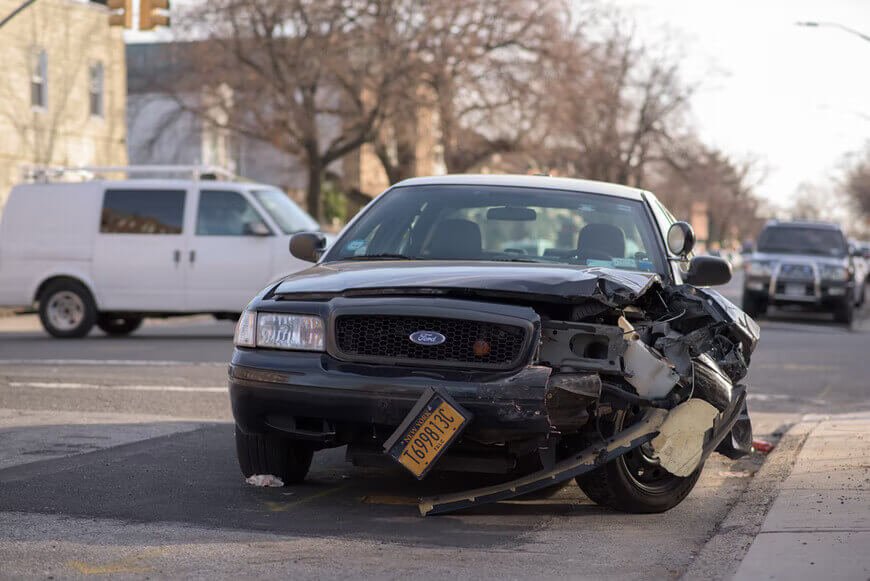If there is one thing to be sure of in this hectic, fast-paced, short-attention-span world that we live in, it is that accidents will happen.
Knowing that they will happen is one thing, but knowing how they happened is extremely important. The nature of the accident that has occurred can help determine liability and assess the injuries that were suffered.
There are three main types of impacts in car accidents: Front-impact, head-on collisions, rear-end collisions, and side-impact or side-swipe collisions. The different types of impacts will often result in different kinds of injuries.
The Rear-End Collision (Most Common)
Self-explanatory, a rear-end collision happens when one vehicle runs into the back of another car. The common assumption is that the driver who hits the back of the other vehicle is at fault, but this isn’t always the case. The following driving don’ts can result in these collisions:
- The front driver makes an unsafe lane change
- The rear driver is distracted
- Either driver is under the influence of alcohol or drugs
- The front driver reverses into the rear vehicle.
- The front car had broken brake lights, so the rear driver didn’t know they were about to stop.
Injuries Often Seen in Rear-End Collisions
The most common injury suffered after a rear-end collision is whiplash, when the soft tissue surrounding the neck and head tear due to the impact’s sudden movement.
The injury can be worse when the collision is unexpected and the hit driver doesn’t have the chance to brace for the impact. Back and spine injuries are also common in these collisions.
Side-Impact and Side-Swipe Collisions
A side-impact crash occurs when one vehicle is struck on the side by another car. A side-swipe collision is when two vehicles collide along the side. Another type of side-impact collision is when one car directly hits the side of another vehicle in a perpendicular direction. This is commonly called a “t-bone collision” because of the “t” shape the colliding cars make.
The more common driving errors or conditions resulting in these types of collisions are the following:
- Not yielding when making a left-hand turn because of a misjudgment of the other cars’ positions or speeds.
- Failure to notice or yield to another driver when merging.
- Illegal u-turns or other unlawful maneuvers.
- Poor driving conditions like rain, fog, and ice.
- Speeding, driving under the influence of alcohol or drugs, distracted driving.
Some of the more commonly reported injuries from these types of collisions are shoulder and pelvic injuries, especially for the person on the side of the car that was hit. Broken bones, internal bleeding and organ damage, and spinal cord injuries are seen with some regularity in these accidents.
Tips to Avoid a Side-Impact Collision
To reduce the risk of a side-impact collision, focus on proper defensive driving. Always look both ways at stop signs and stop lights, and don’t speed through yellow lights or run through red lights.
With sideswipe prevention, always check your blind spot before changing lanes and, when passing cars, look for other drivers changing lanes unexpectedly.
Front-Impact Collisions (Less Frequent but Most Fatal)
A front-impact car accident, also known as a head-on collision, happens when the front ends of two vehicles collide with each other. These collisions don’t occur as frequently as rear-impact or side-impact collisions, but they are the most fatal.
These collisions often occur when a car fails to stay in its lane and crosses the centerline into oncoming traffic. Or when a driver goes the wrong way on a roadway and collides into on-coming traffic.
The most common injuries in a head-on collision include broken bones and joint and muscle injuries. Hips, knees, legs, ankles, and feet can be injured as they absorb the full force of the crash.
Suppose the feet and ankles get caught under the dashboard, steering wheel, or gas pedal. This can cause a traumatic rotation or twisting of the knees resulting in ligament damage such as an MCL (medial collateral ligament) or ACL (anterior cruciate ligament) tear.
Focus is Essential: Minimize Distractions
Safety technology has made significant advances in helping lower the rate of front-impact collisions. New features alert the driver when the car veers outside of its lane, and some vehicles even automatically steer the vehicle in these situations.
However, you can’t totally rely on technology. To avoid these collisions as best as possible, drive especially carefully in bad weather conditions. Minimize distracting behavior like your cell phone and the radio dial. Blasting your favorite songs, eating and drinking, and dealing with your kids or animals while driving can also take your attention from the road.
Conclusion
Driving a car is one of the greatest conveniences of modern life, but it doesn’t come without its costs. When accidents inevitably occur, they will frequently result in injuries that will require medical care, which can come at a high price.
If you or a loved one is in an accident, consult with experienced accident lawyers. Smiths Lawyers can ensure you receive the compensation you deserve while helping you navigate the legal process.
https://www.lawfirmofjeremyrosenthal.com/three-types-of-impacts-in-an-auto-accident/
https://www.justia.com/car-accidents/types-of-car-accidents/
https://www.dlawgroup.com/3-collision-rule-in-car-accidents/
https://www.geico.com/living/driving/auto/car-safety-insurance/common-collisions/
https://www.fordlawoffices.com/front-impact-car-accidents.html

